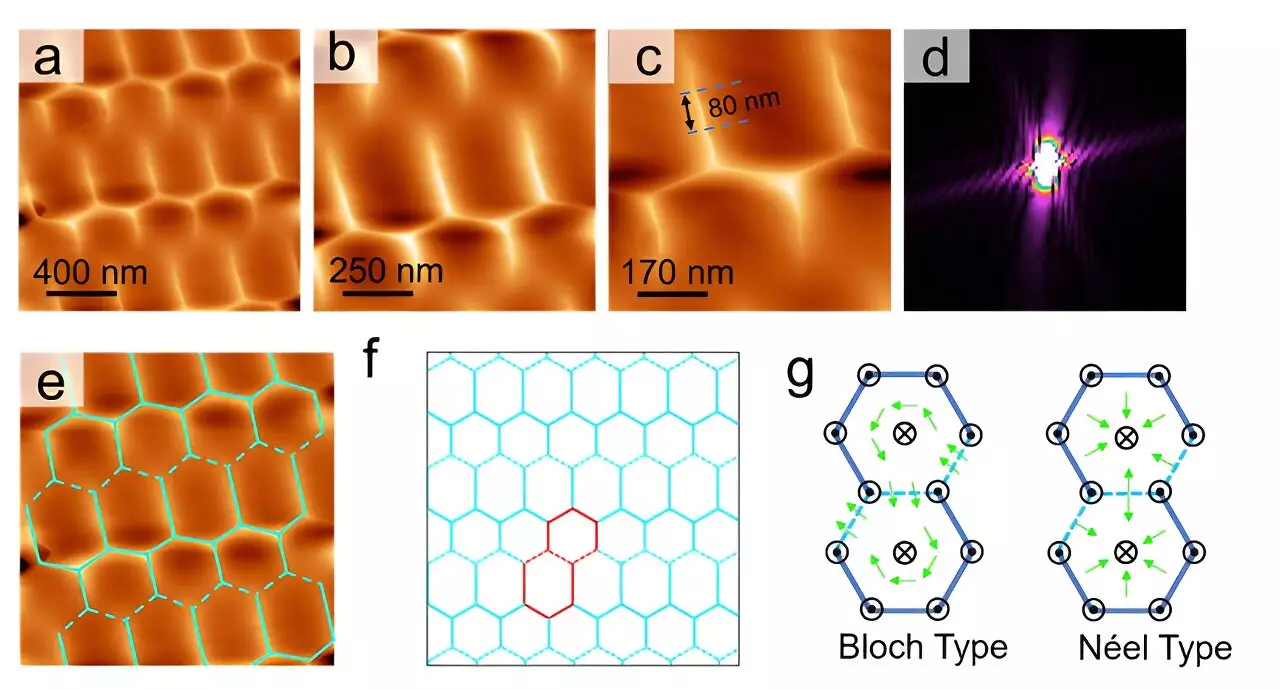A collaborative research effort in China has made a significant leap in the exploration of kagome lattices by successfully observing intrinsic magnetic structures for the first time. This impressive feat was achieved using a combination of advanced techniques, including magnetic force microscopy (MFM), electron paramagnetic resonance spectroscopy, and micromagnetic simulations. The team’s findings were published on August 19 in the highly regarded journal *Advanced Science*. Led by Prof. Lu Qingyou from the Hefei Institutes of Physical Science, with contributions from Prof. Xiong Yimin of Anhui University, this study breaks new ground in understanding material behavior at atomic and electronic levels.
Kagome lattices are distinguished by their unique geometrical arrangements, characterized by properties such as Dirac points and flat bands. These structural features are crucial as they facilitate exceptional phenomena, including topological magnetism and unconventional superconductivity. Despite the growing interest in kagome lattices, questions regarding their intrinsic spin configurations have persisted, posing challenges for researchers focusing on their application in future technologies, particularly in the realm of quantum computing.
Discovery of a Broken Hexagonal Structure
The research team made a fascinating discovery in the binary kagome Fe3Sn2 single crystal, revealing a unique broken hexagonal magnetic arrangement. This formation is attributed to the interplay between the lattice’s hexagonal symmetry and an inherent magnetic anisotropy. Complementary Hall transport measurements substantiated the existence of topologically broken spin configurations, revealing the complexities that emerge within these materials at various temperatures.
In-depth variable-temperature experiments highlighted that the magnetic reconstruction of the Fe3Sn2 single crystals occurs through a second-order or possibly a weak first-order phase transition, effectively challenging the previously dominant hypothesis that posited a first-order transition. This novel insight also necessitated a re-examination of the magnetic ground state at lower temperatures, which the researchers established as an in-plane ferromagnetic state, a stark contrast to earlier claims suggesting a spin-glass state.
A New Magnetic Phase Diagram
Emerging from their research, the team constructed a new magnetic phase diagram for Fe3Sn2, offering a more nuanced understanding of its magnetic properties. Utilizing quantitative data from MFM, they discovered that considerable out-of-plane magnetic components remained intact even at lower temperatures. Through the application of the Kane-Mele model, the researchers interpreted the opening of the Dirac gap in lower temperature conditions, effectively invalidating previous theories that posited the presence of skyrmions.
The implications of this breakthrough extend far beyond theoretical frameworks. The new insights furnish a robust foundation for further explorations into topological magnetic structures that hold potential applications in cutting-edge technologies, such as high-temperature superconductivity and quantum computing. As researchers continue to unravel the complex interrelations within kagome lattices, opportunities for developing novel quantum materials appear on the horizon, signaling a transformative era in condensed matter physics and materials science.


Leave a Reply